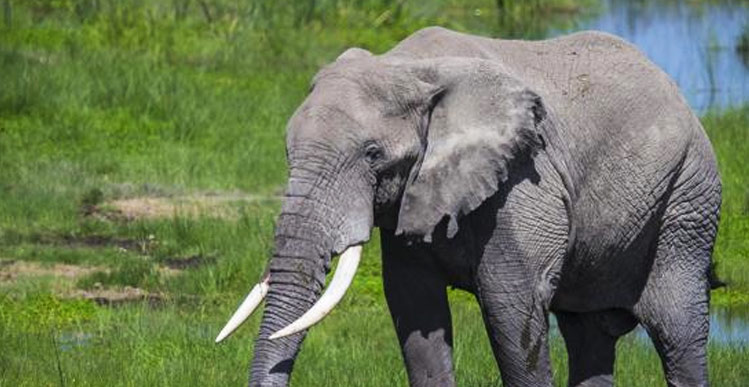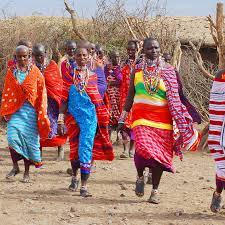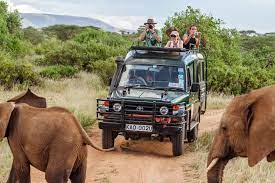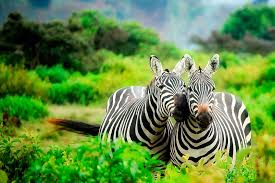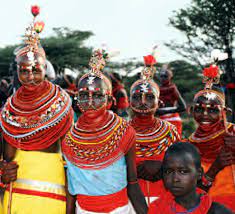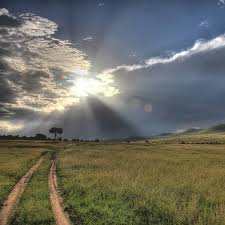Overview
NCA was established in 1959 by the NCA Ordinance No 413 of 1959 as a multiple land use area, designated to promote the conservation of natural resources, safeguard the interests of NCA indigenous residents and promote tourism. NCA is a unique protected area in the whole of Africa where conservation of natural resources in integrated with human development
The main feature of the NCA include the Ngorongoro Crater, The Serengeti Plains that support about 2.0 millions migratory wildlife species of the Serengeti Mara-ecosystem (TAWIRI, 2003) and the catchment forest; the Northern Highland Forest Reserve (NHFR) known as ‘Entim Olturot’ in Maa language. Other important features found in the NCA are the archaeological and palaeontological site located at Oldupai Gorge and the early human foot-prints that were discovered at Alaitole in Ngarusi area. Because of these particular features and the harmonious co-existence between wildlife and people that has existed for many years, NCA was accorded the status of a World Heritage Site and listed as one of the International Biosphere Reserve by the UNESCO’s Man and Biosphere Reserve Programme.
Best Time to Visit
Wildlife viewing inside the Ngorongoro Crater is superb at all times. However, grass on the crater floor is short in the Dry season (June through September) and this makes animal spotting easier. The scenery is lush and spectacular in the Wet season months (from November to May).
Best Time June to September (General wildlife viewing is best)
High Season Most of the year – July to March (The Ngorongoro Crater will have crowds of visitors)
Low Season April and May (The only time when the crater has few crowds)
Best Weather June to October (Rainfall is little to none)
Worst Weather March and April (Peak of Wet season)
June to October –Dry Season
- Wildlife is easier to spot since the grass is shorter in the Dry season
- Rain is little to none and sunshine is abundant
- Chances of contracting malaria are slimmer, as there are fewer mosquitoes
- The Ngorongoro crater gets very crowded
- Mornings and nights get very cold
Getting There
Philip is a renowned Africa expert and author of many Bradt guidebooks to African destinations, including the guide to Tanzania.
Most people will visit the Ngorongoro Conservation Area as part of a bigger package, including a visit to the Serengeti. Conveniently, the conservation area lies en route and is only a three-hour drive on tarred road from the town of Arusha, the starting point of all safaris in northern Tanzania. From Arusha, you can hop around the parks of the northern circuit by small aircraft on chartered or scheduled flights, or you can drive and do the whole circuit by safari vehicle. A popular option is to fly into the Serengeti and make your way back by safari vehicle via the Ngorongoro crater, or the other way around. In most cases, your tour operator will pick you up from the airport. Coming from the Seronera area in the Serengeti, the distance to the crater is about 140km/90mi and the driving time is about three hours. This can obviously take much longer allowing for wildlife viewing along the way. The 80km/50mi drive from Lake Manyara to the Ngorongoro Crater takes about two hours, and the 180km/110mi drive from Tarangire takes about four hours. The best option to get to Arusha is to fly into Kilimanjaro International Airport (JRO), which is situated about 46km/29mi from Arusha. It is also possible to fly into Julius Nyerere International Airport (DAR), near Dar es Salaam and fly on to Arusha Airport (ARK) or Kilimanjaro International Airport (JRO). A third option is to book a cheaper flight to Nairobi in Kenya and take a shuttle bus to Arusha.
Airlines & Ticket Prices
Please check Skyscanner, or for multiple-destination flights check Expedia, to see which airlines can take you to Kilimanjaro International Airport (JRO) or Arusha Airport (ARK), and what tickets would cost. Visit the ‘cradle of civilization’. A place where our ancestors walked over 3 million years ago. The Ngorongoro Conservation Area is a natural and ecological marvel. Surrounding an old volcano that collapsed to form a caldera, the conservation area is a natural enclosure providing stunning sights, and with a wide variety of flora and fauna that will definitely blow your mind away. The area is spread over 3000 miles- to ensure that you cover all the spots you must see, you definitely need to know the top 5 things you should not miss out while on a Ngorongoro safari.
Activities
This 19km wide crater is one of the largest calderas in the world. What’s unique about a Ngorongoro Crater tour is that the crater is not a lake- and that is extremely rare. The walls of the caldera rise up over 400-600m, providing a stunning and protected enclosure for nature drama to occur. Check out the Big 5 on the same day! There are plenty of elephants, wildebeests, zebras, buffaloes and gazelles, and they are hunted by the hyenas, lions, jackals, and leopards. A visit to the crater will also bring you closer to the black rhino- a critically endangered animal.
Empakaai Crater
The first time you see the Empakaai Crater, you might not believe your eyes. The alkaline lake in the middle of the crater is surrounded by the steep walls of the caldera, beyond which you can see stunning views of Ol Doniyo Lengai, Tanzania’s active volcano or even the snowy peak of the Kilimanjaro.
Nature at its stunning best
This lake is surrounded by lush green forests with fig trees, blue monkeys, and colorful birds. You can also find buffalos, bush bucks and water bucks, and pink flamingos here.
Olduvai Gorge
If the Ngorongoro region is known as the ‘cradle of civilization’, the Olduvai Gorge is probably why. Mary Leakey’s famous discovery of ancient human fossils and tools at the Gorge shed a lot of light on the dawn of human history. The birthplace of mankind Marvel at the ancient elephant bones, fossils and tools that have been dug up here. The Gorge, and the museum, will enlighten you, and make you wonder about your place in history.
Laetoli
Laetoli is a remote location- but one you must definitely not miss. Laetoli is home to a 27m long trail of hominid (ancestors of humans) footprints that were left here over 3.7 million years ago. This is the best place for you to come close to our ancestors, and marvel at how far humans have come since our humble beginnings.
Walk in the footsteps of your ancestors.
Laetoli’s remote location makes it an incredibly adventurous place to visit as well- so even if you’re not a history buff, this is definitely a bucket list destination.
Gol Mountains
Are you an adventurer? Do you love going off the map, exploring places where few people have gone before? The Gol Mountains are an ideal destination for you. The Gol Mountains are home to the Maasai, who still follow their traditional way of life in a cashless society, unaffected by modernity. The mountains are visited by a range of wildlife once the rains come in, so you can see a lot of wildlife here as well.
Experience freedom like you’ve never before.
This is quite a remote location, so it is recommended that you take a safari guide, or a guided tour, so you can make the most out of the journey, and also find a good place to camp in.
Uniqueness
Ngorongoro Crater is the main attraction of this area. It is home to the highest concentration wildlife in Africa. You can see lions, elephants, zebras, black rhino and so much more. The views from the crater rim over the crater floor are spectacular. No wonder it is chose as one of Africa’s Seven Natural Wonders.

